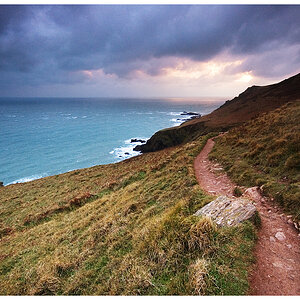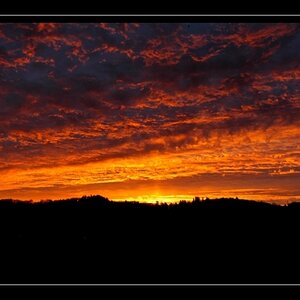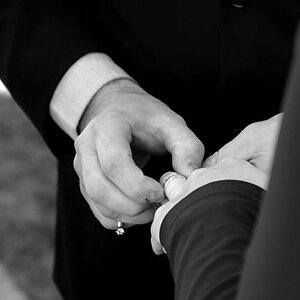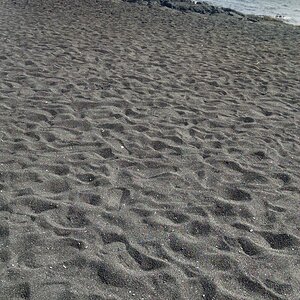ksmattfish
Now 100% DC - not as cool as I once was, but still
- Joined
- Aug 25, 2003
- Messages
- 7,019
- Reaction score
- 36
- Location
- Lawrence, KS
- Website
- www.henrypeach.com
- Can others edit my Photos
- Photos NOT OK to edit
As long as you leave the standards parallel to each other it acts just like any other camera you have, with no auto features.
Compose (with aperture wide open so you can see)
Focus (move front standard)
Meter and set f/stop and shutter speed (remember to close lens up after focusing)
Cock shutter
Insert film holder or Pola back into camera
Pull darkslide
Shoot pic
Return darkslide
The cool trick for landscapes is to tilt the front standard (lens standard) forward. This tilts the DOF so that your area of sharpest focus travels along the ground. You can get much greater DOF at lower apertures.
For architecture you can correct converging lines. Start out photographing a tall building. The sides slope towards each other as they get farther away. With a view camera you can tilt the back standard (film standard) and change this to the sides being parallel and perfectly vertical.
Both of these effects can be seen in the ground glass, so it's easier to do than read about. Although looking over a view camera book couldn't hurt.
Compose (with aperture wide open so you can see)
Focus (move front standard)
Meter and set f/stop and shutter speed (remember to close lens up after focusing)
Cock shutter
Insert film holder or Pola back into camera
Pull darkslide
Shoot pic
Return darkslide
The cool trick for landscapes is to tilt the front standard (lens standard) forward. This tilts the DOF so that your area of sharpest focus travels along the ground. You can get much greater DOF at lower apertures.
For architecture you can correct converging lines. Start out photographing a tall building. The sides slope towards each other as they get farther away. With a view camera you can tilt the back standard (film standard) and change this to the sides being parallel and perfectly vertical.
Both of these effects can be seen in the ground glass, so it's easier to do than read about. Although looking over a view camera book couldn't hurt.









![[No title]](/data/xfmg/thumbnail/30/30877-ef8d8a8cf110d5566382bb4e8a76fd3f.jpg?1619734492)




![[No title]](/data/xfmg/thumbnail/39/39292-4169a355b794ae9735845c4ad45d06ff.jpg?1619738958)